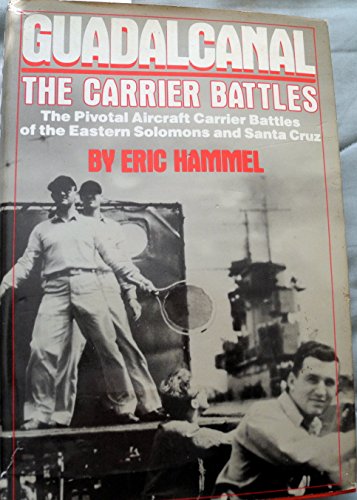Synopsis
The second in a series of full-length books by the author to focus on the Guadalcanal campaign, specifically the pivotal aircraft carrier battles of the Eastern Solomons and Santa Cruz.
Guadalcanal: Decision at Sea is a full-blown examination in vivid detail of the Naval Battle of Guadalcanal, November 13-15, 1942, a crucial step toward America’s victory over the Japanese during World War II. The three-day air and naval action incorporated America’s most decisive surface battle of the war and the only naval battle of this century in which American battleships directly confronted and mortally wounded an enemy battleship. This American victory decided the future course of the naval war in the Pacific, indeed of the entire Pacific War.
Hammel has brilliantly blended the detailed historical records with personal accounts of many of the officers and enlisted men involved, creating an engrossing narrative of the strategy and struggle as seen by both sides. He has also included major new insights into crucial details of the battles, including a riveting account of the American forces’ failure to effectively use their radar advantage. This is the concluding volume in Eric Hammel’s series of three independent books focusing on the Guadalcanal campaign and exploring all the elements that made it a turning point of the war in the Pacific.
Reviews
The second volume of Hammel's Guadalcanal trilogy, this covers two relatively unknown carrier confrontations in the South Pacific in 1942: the battle of Santa Cruz, a technical victory for the Japanese, and the battle of the Eastern Solomons, a draw. Although most of the tight narrative is concerned with tactical operations, Hammel keeps the strategic goals of both sides in clear view. By the end of the book, it is also obvious why he argues that the battle of Midway, widely regarded as the beginning of the end for the Japanese, should be replaced as such in World War II annals by the Marine landing on Guadalcanal. The book includes informative sections on the development of aircraft carriers, the difference between American and Japanese fighter doctrine (plus appraisals of opposing hardware), the effect of a momentarily "defeatist attitude" by the U.S. command which led to a crisis in the land campaign on Guadalcanal, and a bold reappraisal of Admiral Isoroku Yamamoto, commander in chief of the Combined Fleet, whom the author calls one of the most overrated characters in modern military history. Photos.
Copyright 1987 Reed Business Information, Inc.
Volume 2 of Hammel's Guadalcanal trilogy is even better than his previous book ( Guadalcanal: Starvation Island ). While that work focused on a land battle, this one concentrates on the desperate air-sea battle of the Eastern Solomons and Santa Cruz islands. There have only been five carrier versus carrier battles in naval history; Coral Sea, Midway, and the Marianas have been criticized and analyzed many times. The battles treated here have until now been neglected. Hammel begins his study with a useful discussion of the development of U.S. and Japanese carriers, aircraft, pilot training, weapons, etc. Hammel does not write dry history. His battle sequences are masterfully portrayed. Essential for World War II collections, along with volume 1. Stanley Itkin, Hillside P.L., New Hyde Park, N.Y.
Copyright 1987 Reed Business Information, Inc.
"About this title" may belong to another edition of this title.
